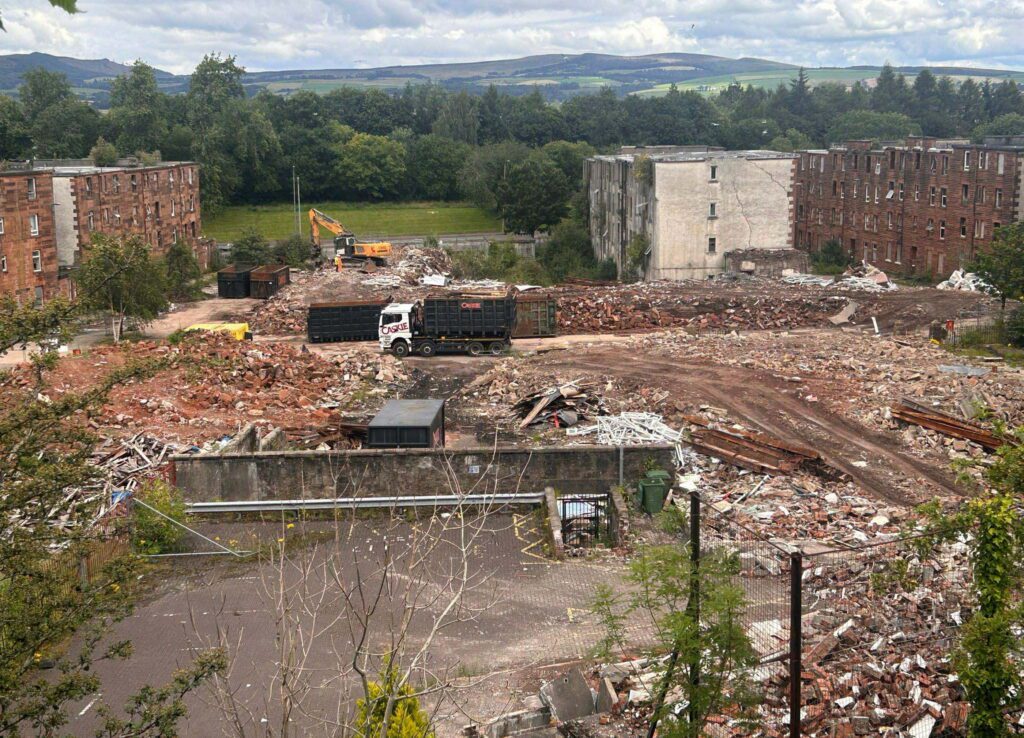A Historic Demolition Begins at an Abandoned Housing Estate
A significant step has been taken in the ongoing effort to clear an abandoned housing estate that has long been referred to as “Britain’s Chernobyl.” The first tower block of the Clune Park site in Port Glasgow, Scotland, has been demolished as part of a major cleanup project. This marks a crucial milestone in the process of removing the deteriorating structures that have stood empty for decades.
The demolition work is now progressing across the entire site, with buildings being reduced to rubble. The most recent phase involved the destruction of the first block of flats, along with several other key structures such as the old Clune Park School, a church, and a community centre. These buildings had become symbols of neglect and decay, contributing to the eerie atmosphere that has surrounded the area for years.
Work on clearing the estate, which has remained largely uninhabited since the early 1990s, officially began in June. A total of 430 flats spread across 45 blocks will be demolished. The first stage of the project involves the removal of 138 properties across 15 blocks located at the intersection of Robert Street and Wallace Street.
Inverclyde Council now holds ownership of 80% of the Clune Park estate after a prolonged legal battle with previous landlords. This ownership allows the council to move forward with plans to transform the site into something new. It is hoped that the demolition will pave the way for the construction of up to 165 new homes, bringing much-needed development to the area.
A Ghost Town with a Troubled Past
Clune Park, built in 1905, was once a bustling residential area. However, over time, the tenement buildings fell into disrepair, and the estate became increasingly abandoned. Today, the site is described as a ghost town, with derelict flats, a rundown church, and walls covered in graffiti and litter. The area has also become a magnet for urban explorers, who are drawn to its haunting and post-apocalyptic appearance.
The estate was completely abandoned in 1997, leaving behind a landscape of decay that has remained untouched for nearly three decades. The lack of maintenance and the absence of residents have contributed to the deterioration of the buildings, making the site one of the most visible examples of urban neglect in the UK.
Despite its bleak reputation, the demolition of Clune Park represents a chance for renewal. The council’s efforts to clear the land and rebuild the area could bring new life to this forgotten corner of Port Glasgow. With the first phase of demolition complete, the next steps will involve assessing the site for future development and ensuring that the transformation benefits the local community.
Looking Ahead
As the demolition continues, the focus will shift from destruction to rebuilding. The goal is not just to remove the remnants of the past but to create a space that can support new residents and foster a sense of community. The success of this project will depend on careful planning, public input, and the commitment to creating a sustainable future for the area.
For now, the first tower block has been taken down, marking the beginning of a long-awaited change for Clune Park. As more buildings are removed and the site is cleared, the possibility of a fresh start for this once-thriving estate becomes more tangible.







